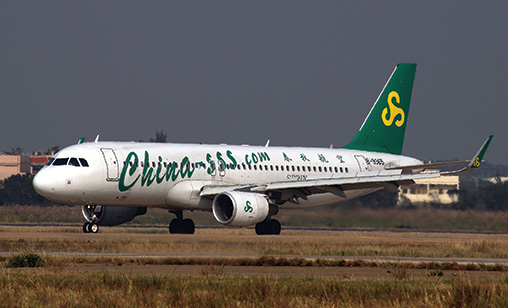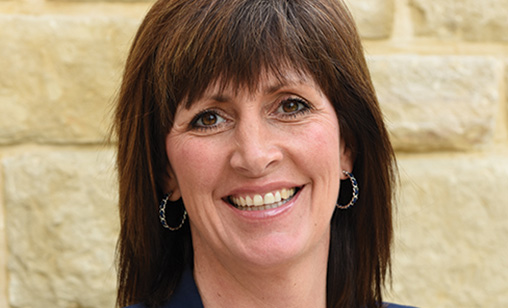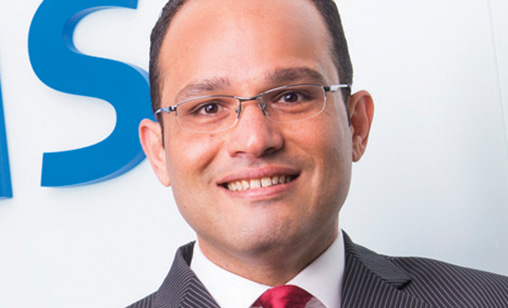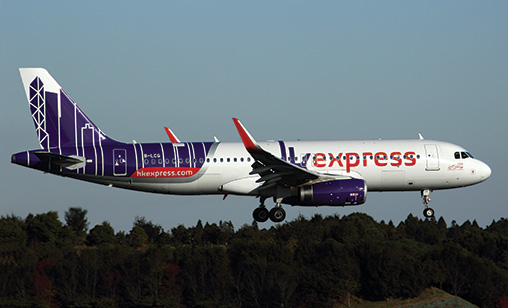Special Report
Adapt or disappear
New technology and the demands of airlines to directly deal with paying customers is forcing Global Distribution Systems (GDS) to adapt their business models to avoid industry obsolescence.
June 1st 2016
Airline Global Distribution Systems (GDSs) have come a long way since they were created in the 1980s for airlines to more easily sell seats cost effectively across all borders. Read More »
Today, GDS technology sits at the heart of the global travel business as it allows travel agents and their customers to book their entire travel experience, from tickets to accommodation and every type of on-ground travel service.
 |
But the three major airline GDSs, Amadeus, Sabre and Travelport, are feeling the competitive heat from airlines. Their former business partners are selling travel directly through their own platforms and from the New Distribution Capability (NDC) launched by the International Air Transport Association (IATA) in 2012.
In the early days of computerised reservations systems, it was not possible to book a flight without GDS. Now, airlines are investing heavily in their own reservations systems, direct-distribution channels and partner systems. They want to minimise their dependency on GDSs for meeting sales and revenue targets and for responding to changing air travel trends.
As well, the advent of price comparison websites has eliminated the need for dedicated GDS for point-in-time prices and inventory for both travel agents and passengers.
This swift technological shift already has prompted some industry experts to forecast that GDSs are a sunset business and that they could be completely phased out by 2020.
But global GDS powerhouse, Amadeus, told Orient Aviation otherwise. Hazem Hussein, executive vice president airline commercial, Amadeus Asia Pacific. “The cost of each GDS transaction remains very low compared with other industries. It remains the most efficient, neutral and cost-effective distribution channel to reach travel agencies, not just for seats, but for effective retailing, because of superior reach.”
The Madrid-based GDS said 64% of all bookings outside its home market still come through the indirect channel, particularly bookings for big ticket items.
“On average, 67% of business and first class bookings come from indirect distribution and yield from the indirect channel is, on average, 42% higher than the direct channel,” said Hussein. “The cost of each GDS transaction remains very low compared with other industries, especially when put against the direct online traffic acquisition costs per traveller.”
In 2015, 37 airlines renewed content agreements with Amadeus. To date this year, the GDS extended its cooperation with Spring Airlines, China’s largest low-cost carrier, Virgin Australia and HK Express. Asia is a priority for the company.
The GDS playing field has become more competitive since the International Air Transport Association (IATA) rolled out its New Distribution Capability (NDC) in 2012. Initially, the GDSs feared the NDC standard would make them redundant.
 |
| 'Sabre has been enabling airlines to sell their products in new and different ways through both direct and indirect channels for many years and would continue to utilize emerging technologies in a way that benefits all constituents in the travel ecosystem' |
| Kathy Morgan Sabre’s director transportation product solutions |
Based on XML-based rich-data content, the NDC standard not only enhances the capability of communications between airlines, travel agents and the end customer, it also improves communications between the GDS providers.
However, a number of issues still surround the radical development, including funding and a healthy degree of protectionism.
The NDC has three independent certifications - Shopping, Order Management and Airline Profile. IATA believes NDC will give GDS providers more ammunition to drive sales, rather than drive them out of the market. IATA said NDC modernizes the 40-year-old data exchange standards for ticket distribution that were developed before the Internet was invented. It also said NDC will enable innovation in travel technology solutions and apps.
Using the NDC Shopping, the aggregators can transmit much more detailed and complex information for travellers to consider. Previously, information from airlines was limited to fare and equipment details. The sky is now the limit for content.
An airline can offer customers all its seat offerings and meal offerings, with images and limitless detail, luggage allowances both paid and free, frequent flyer information, paid lounge access, priority boarding, paid seat selection, on-board Wi-Fi, and chauffeur services.
In the past, an airline customer had two options when planning a journey: the customer’s preferred website where she or he bought a ticket, including extra luggage, made a seat selection and ordered ancillary items. Or his travel agent would present him with a range of travel options. In both cases, the customer had very little information apart from the schedule and the fare.
The NDC standard now being rolled out allows a customer still to consult a travel agent but there will be a much more complete picture of options. This way, ancillary inventory will be captured at the time of the core booking, allowing greater transparency of individual customer spend, enhanced forecasting, and improved data and payment processes.
NDC Order Management enables stakeholders, including GDSs, to manage NDC-driven orders throughout the entire lifecycle, from booking to fulfilment, by collecting and passing on payment details and also allowing them to request accountable documents issuance to fulfil NDC-driven orders.
With the NDC Airline Profile, airlines can communicate with their target markets if they are willing to respond to NDC-driven requests for offers and associated services.
In a 2015 survey conducted by Atmosphere Research Group, travel agents said NDC makes them more competitive and customer focused and makes selling airline ancillary products more efficient.
The GDSs have been accused of a lack of vision, interest and execution when merchandising airline content. It took GDSs more than three years to sell Air New Zealand’s (Air NZ’s) Skycouch product, so agents had to go directly to Air NZ to purchase the product, which caused many in the industry to claim that GDS providers had stifled ancillary sales. Given that global ancillary sales amounted to more than $30 billion in 2015, it is a serious criticism.
Airlines also have complained they do not receive value for money from GDS providers and have said they are not training their agents to use airline ancillary products to upsell to passengers. GDS providers and agents counter that ancillaries do not attract commissions from airlines.
 |
| 'The cost of each GDS transaction remains very low compared with other industries. It remains the most efficient, neutral and cost-effective distribution channel to reach travel agencies, not just for seats, but for effective retailing, because of superior reach' |
| Hazem Hussein Amadeus Asia Pacific executive vice president airline commercial |
The disagreement between airlines and GDS providers came to a head in June 2015 when the Lufthansa Group, fed up with fee increased and complacency, began imposing an additional charge of 16 Euros if a booking was made through a GDS rather than a Lufthansa system. The airline said the costs for third party systems were several times higher than their own. Several other airlines, including Air France–KLM and Emirates, said they would follow Lufthansa’s example.
Naturally, airlines embraced IATA’s open and ready-to-use NDC approach, but IATA realised it had to include the GDSs if NDC was to work. Said IATA director-general and CEO, Tony Tyler, earlier this year: “We had to rethink and take stock of where we were, particularly about bringing partners on board like the GDS. It wasn’t going to work if we didn’t have them [the GDSs] with us. That was a big step forward when we got them on board.”
“While it’s true that NDC had a bumpy start in terms of industry acceptance, as the benefits of adopting a single data transmission standard become clearer, major players have climbed on board” said IATA’s NDC director, Yanik Hoyles.
“It is important to note that GDSs are already working towards making it possible for airlines to merchandize their products via travel agents in a manner more consistent with airlines’ own websites. However, each GDS has been working on its own proprietary solution.”
“Sabre’s GDS business is in discussions with several airlines regarding NDC based solutions to support their ancillary and merchandising strategies. abre’s Airline Solutions business has developed our Dynamic Retailer solution which supports customer centric retailing utilizing both traditional and NDC connectivity standards,” Sabre’s director transportation product solutions, Kathy Morgan, told Orient Aviation. The Texas-headquartered GDS provider will utilize NDC, along with other technology standards such as ATPCO OC, IATA EMD, and IATA EDIFACT.
So why are the GDSs this protectionist? They see significant danger in lost revenues, because in a fully-realized NDC environment, the airline creates the offer, rather than the GDS, and also can manage functions such as ticket issuance and payment authorization , functions currently performed outside the airline.
After learning what IATA’s NDC can do for them, most airlines are urging the GDS providers and agents adopt the NDC, but questions remain about how the providers would earn fees if they moved to the NDC.
Creating new interfaces and training agents carry a significant cost, which is another big ticket item the GDSs want cleared. “IATA’s role is to work with industry to develop technical standards. However, it is up to the marketplace to decide when and how to implement the standard and how the costs associated with implementation are allocated,” said Hoyles.
More than 15 airlines are using all or part of the NDC standard and among the top 25 airline groups, 20 are operating with it or have plans to do so. Recent high-profile announcements have included Emirates Airline launching its NDC portal and British Airways increasing the capability of its NDC API (application programming interface). “Supporting this activity is rising, participation from IT suppliers, with over 20 providers including the three global distribution systems are building solutions around NDC,” IATA’s Hoyles said.
In the Asia-Pacific, the Chinese carriers represent the largest group of NDC early adopters. Air China, in cooperation with TravelSky, which is China’s state-owned answer to travel information technology, piloted the NDC end-to-end technology to validate the successful sale of international air tickets and prepaid baggage ancillary services with two agents, Ctrip and China Air Service.
 |
| 'While it is true that NDC had a bumpy star in terms of industry acceptance, as the benefits of adopting a single data transmission standard becomes clearer, major players have climbed on board' |
| Yanik Hoyles IATA NDC director |
Air China subsidiary, Shandong Airlines, and China Southern Airlines have launched similar schemes. In 2014, Hainan Airlines partnered with CTBA and Ctrip in a pilot program of ancillary add ons to determine if they supported the distribution of their domestic air products through local travel agencies (‘Skydreamer’ pilot). Last year, Hainan expanded this initiative to include NDC Order Management to simulate an end-to-end transaction and to test the capability to distribute more rich content to the CTBA travel portal.
The three major Australasian carriers - Air New Zealand (Air NZ), Qantas Airways and Virgin Australia – embraced NDC early on. In cooperation with a U.S. consolidator and with the support of IT provider JR Technologies, Air NZ piloted NDC Shopping to finally distribute its “SkyCouch” and “Deluxe” products in a third-party environment.
Qantas is piloting NDC Shopping for its Chauffeur Drive product in a third party channel environment and Virgin Australia used NDC Baseline as early as 2012 to support its transition from a low-cost airline to a full service carrier.
So what does the future hold? “By 2017, traditional GDS bookings will account for just 7% of worldwide airline reservation volume, down from about 50% to 60% today,” said Atmosphere Research Group co-founder, Henry Harteveldt, in a report commissioned by IATA.
However, the accuracy of this forecast is questionable, particularly considering that the two largest future aviation markets – China and India – are only just waking up to their potential and will undergo the traditional cycle of maturity that includes GDSs and travel agents.
It also will be more difficult to eliminate third parties from the booking process as far as the corporate travel business is concerned as carriers would likely have to spend the same amount of money on their own and other third-party distribution systems to retain these customers.
True personalization in shopping and selling requires significant hardware, lots of software and expensive, that are not in place at most airlines now.
Nevertheless, IATA’s Hoyles believed that in 2017 and 2018, “we will continue to see confirmation of NDC becoming main stream as more airlines adopt the standard. This will then set the ground for mass adoption”, he said.
If there is one point on which all stakeholders agree, it is that innovation is the only way forward. But not all roads lead to Rome, or the NDC, GDS providers say. IATA’s Tyler appears to agree: “We have set up standards for the development of distribution through the indirect channel and other ways which will now presumably carry on until someone else betters it,” he said, and added “smaller businesses are coming on board as well as putting the building blocks in place for airlines to change the way they merchandise. So that snowball is well and truly rolling down the hill and getting bigger every day. I am pleased about that.”
IATA held its first IATA NDC “hackathon” last October when almost 100 developers were given the opportunity to develop travel apps using the NDC standard. At press time, IATA planned a second hackathon in Berlin focused on solutions and apps in the area of business travel,” said Hoyles.
“From Sabre’s perspective, we aren’t waiting on IATA’s NDC to deliver merchandising solutions to airlines. Sabre has been enabling airlines to sell their products in new and different ways through both direct and indirect channels for many years and would continue to utilize emerging technologies in a way that benefits all constituents in the travel ecosystem,” she said.
“While important, we recognise that NDC-XML is just one standard among many key elements involved in delivering an enriched passenger experience, as it is only a small part of the merchandising effort underway in the industry,” said Amadeus’ Hussein. “With the global travel industry, and the way in which consumers experience it changing so rapidly, continuous technological evolution is a minimum requirement, just as it has happened in many other industries.”
 |
Amadeus said its vision is to develop a truly open, intelligent, dynamic and customer-centric global travel ecosystem underpinned by three key elements: development and roll out of a new Global Merchandising System (GMS) to enable airlines to create their offering dynamically; evolve its retailing and distribution systems into more efficient processes for airline content delivery and full integration of both the new GMS and its retailing and distribution systems with the Amadeus’s Altéa PSS Suite.
Similar to IATA’s hackathons, the Madrid-headquartered GDS last November launched the Amadeus Next startup initiative, aimed at evolving original ideas in travel. It already has eleven travel technology startups on-board: TripHobo, Klook, Crayon Data, Orahi, Triposo, TopDocs, TripVerse, StayAngel, TraveLibro, PredictHQ and Dozo! Amadeus says it is investing more than 1.8 million Euro in R&D every day.
While these innovation drives will benefit the end customer, they appear just slightly at odds with IATA’s aim to create a consistent environment where airlines will be able to distribute the entirety of their product portfolio, including ancillaries, in a uniform manner across all channels both directly and indirectly using rich format.
Then again, IATA is aware NDC is not a perfect solution. “NDC will never finish. We have set up standards for the development of distribution through the indirect channel and other ways which will now presumably carry on until someone else betters it,” said IATA’s Tyler.